How One Astrophotographer Made a New Scientific Discovery
![]()
Astrophotographer Bray Falls recently posted a series of striking images on Instagram that instantly caught PetaPixel’s eye. Falls’ photos aren’t just visually stunning; they represent a brand-new discovery, a significant accomplishment for any astrophotographer.
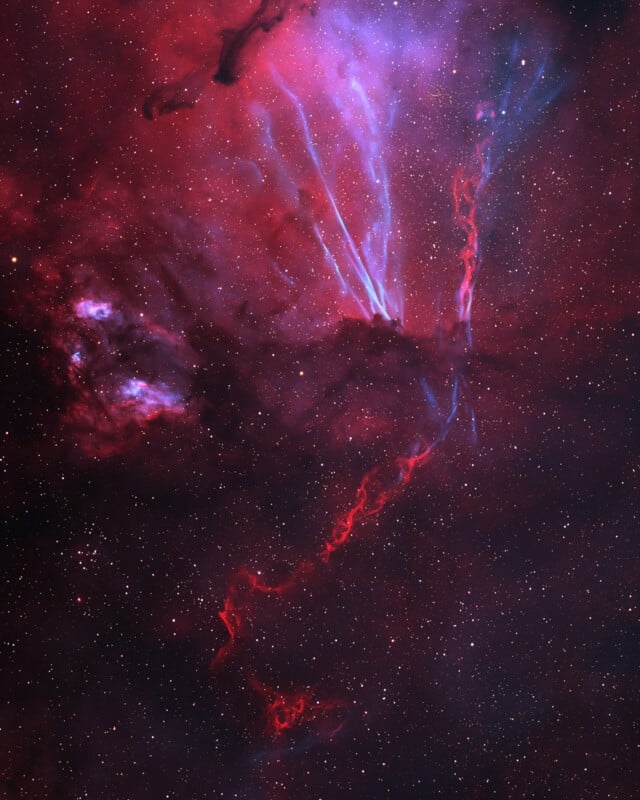
The Discovery
The story behind Bray’s new images goes back to last December. He discovered an “insane structure unlike anything else in the sky,” tucked away in the starlight of the small Sagittarius star cloud. “I discovered this structure while performing narrowband oxygen III (OIII) surveys of the whole area of the sky,” Falls tells PetaPixel. “This is an emission line that isn’t well studied, so lots of cool stuff has the chance to pop up.”
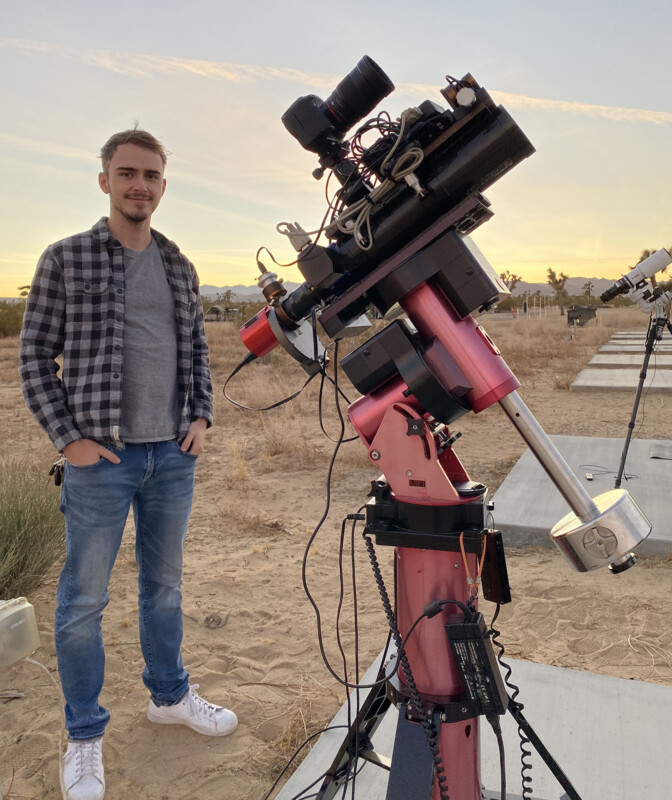
While a detailed discussion is beyond the scope of this article, when Falls refers to “OIII,” he is talking about doubly ionized oxygen. Concentrated levels of OIII are found in diffuse and planetary nebulae, so astronomers often use narrow band-pass filters designed to isolate OIII emission lines (500.7 nanometers and 495.9 nm).
While he discovered the object in the winter, he had to wait until this spring to capture images. Since the structure has only just now been found by Falls, it has yet to be studied. However, Falls knows the origin of the incredible structure.
“This structure is guaranteed to be a supernova remnant. The remnant is known in the radio and X-ray spectrum, but nobody has bothered to study it since it was found. It is about 10,000 light-years away, and you can view existing radio and X-ray images.”
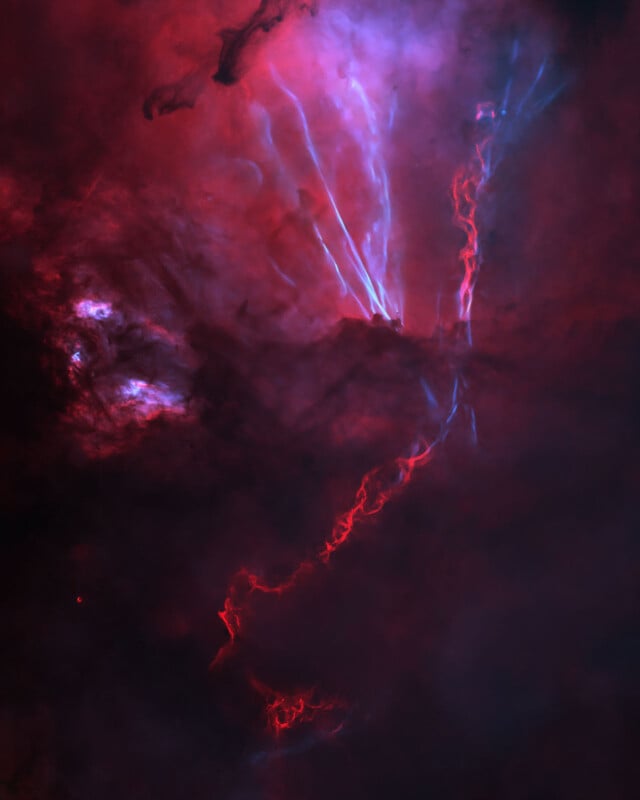
Those linked images look much different from Falls’ new photos. What sets Falls’ work apart and makes it unique is that he discovered an “optical component” of the supernova remnant. This means “it is visible in wavelengths the eye can perceive.”
Not only is Falls the first person to observe this supernova remnant in visible wavelengths, but the structure itself is also unusual. “There are some minor resemblances to other supernova remnants in the sky, like the Vela Supernova Remnant (SNR), and maybe the Veil SNR, but there is not a structure in the sky quite like this one. It is unique and very weird,” Falls explains to PetaPixel.
What do the Incredible Colors Show?
In the spectacular multi-colored image above, Falls explains that “red represents Hydrogen-alpha emission, and blue represents OIII emissions.” Many of the colors in the picture are natural, including the colors of the stars and some of the natural background gases.
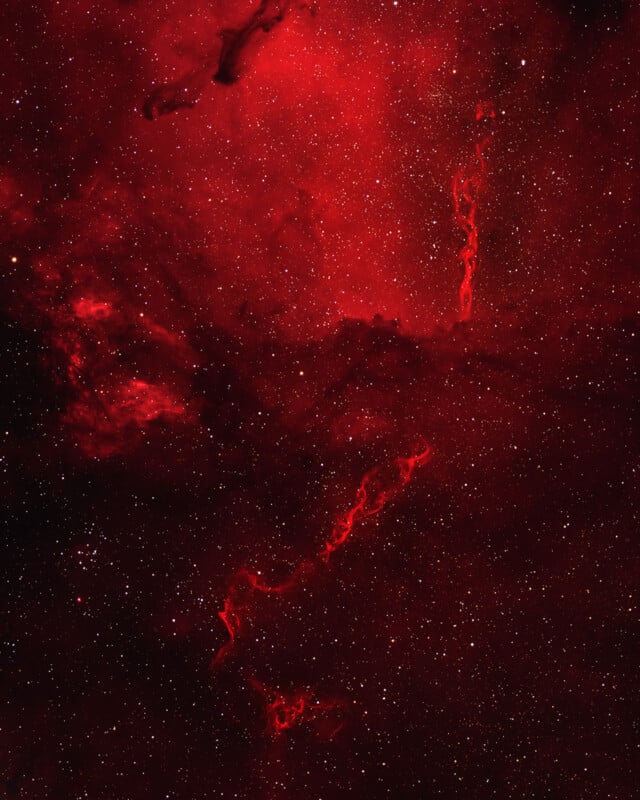
“The colors are close to true but a little off,” Falls explains. “OIII is more a teal color, but I make it look blue since it looks prettier. The hydrogen emission is red, so this is realistic.”
As for processing, a lot of work is involved to ensure that images showcase celestial structures in the best light.
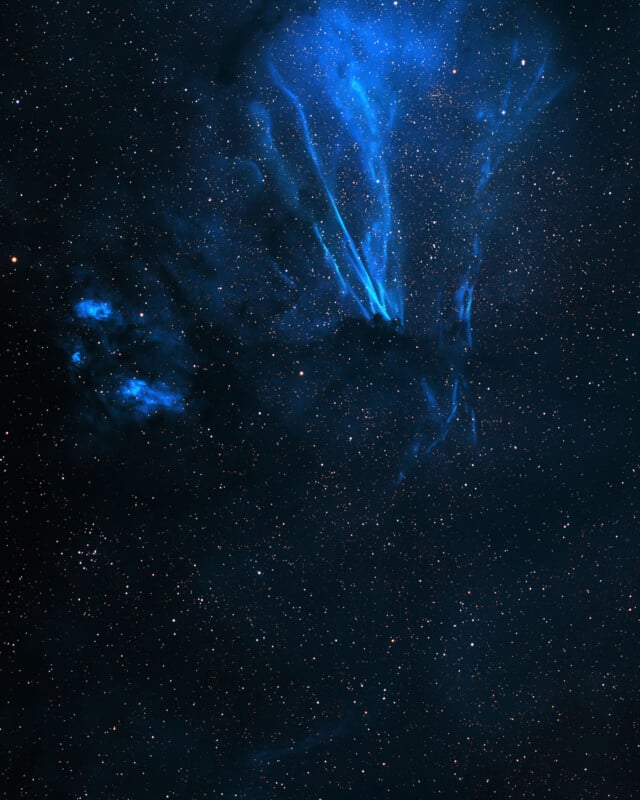
“The starless narrowband images are overlayed upon the RGB image with stars to help emphasize the narrowband gasses. I also must do a continuum subtraction to remove the diffuse starlight from the narrowband images to improve contrast. This structure is in the middle of the milky way, so the glow of the starlight makes it into the narrowband filter when it shouldn’t. That light can be subtracted from a natural color image,” Falls explains to PetaPixel.
Balancing Beauty and Realism in Astronomy Image Processing
PetaPixel asked Falls how he approaches image processing. For example, as OIII emissions are more teal straight from the camera, and Falls opts to process them to be bluer because it looks better, how does he emphasize visual appeal relative to delivering a “realistic” final photo?
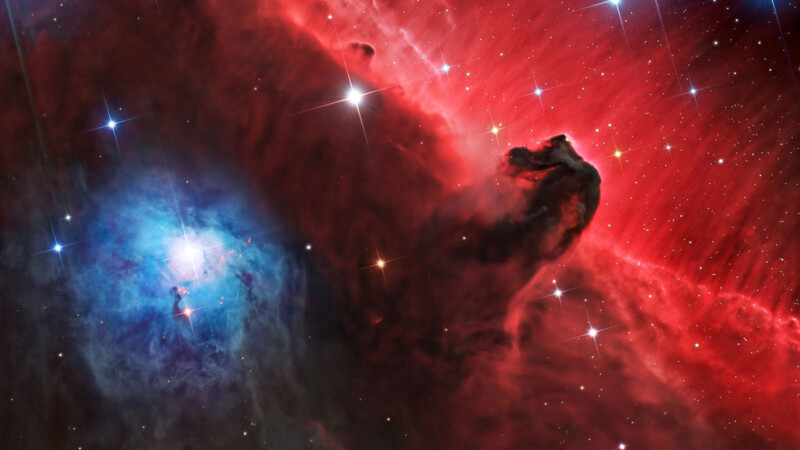
“This is something I struggle with and something I change my mind about as I have continued in astrophotography. Nowadays, my goal is to show new details in context and not corrupt space’s natural beauty. For images that mix natural light and narrowband, I try to keep some realism regarding color, especially for details.”
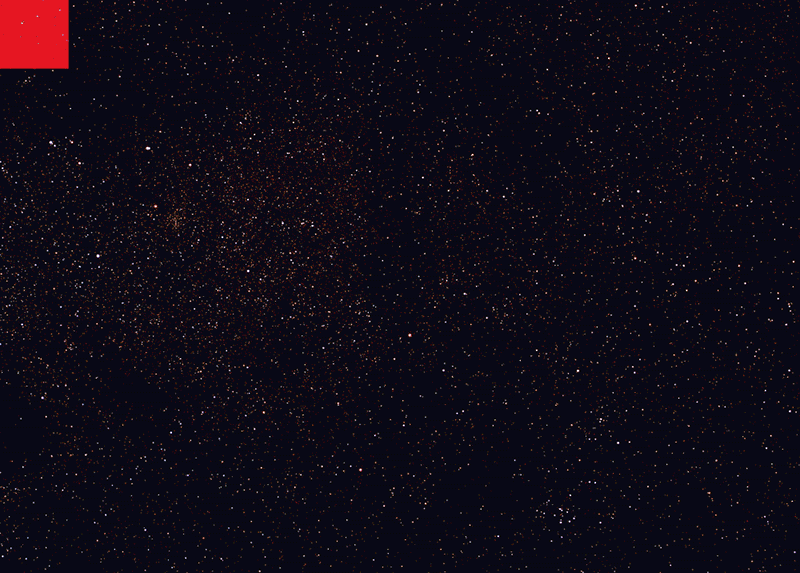
However, when working in pure narrowband images, Falls explains that colors are “false no matter what you do,” so he has no reservations about being creative when editing colors.
As for the details in photos, his goal is to emphasize what’s present in the image. Realism is essential to Falls.
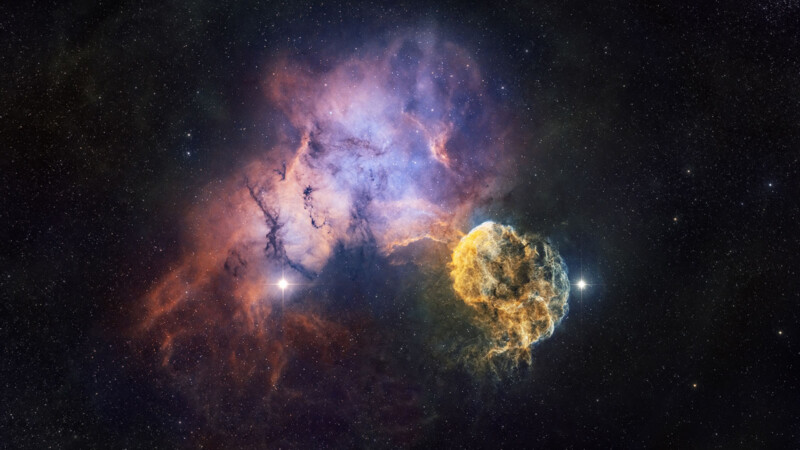
“My primary objective is to show things in space in a new light, whether that be showing a familiar object in a new context or showing an entirely new object. My goal is to take creative images,” says Falls.
“I want viewers to get the sense that there is a world of wonder above their heads that is still being explored. Not everything is known. Not everything has been seen. There is still so much to explore if you decide to look. I want to inspire curiosity in the viewer. Whether it is my own work or someone else’s, viewing astrophotography makes me feel excited and inspired. I’m especially excited by seeing unique images, even of common objects. Astrophotography is space exploration, and the fact that anyone can do it, even from their backyard, is very inspiring to me,” Falls continues.
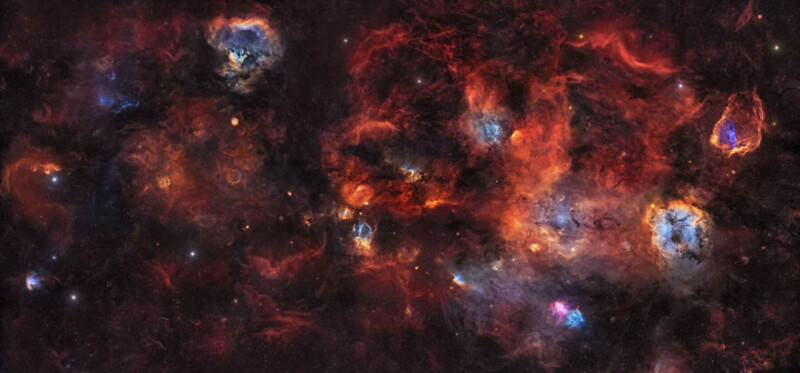
From the Backyard to the Big Time
Falls’ latest discovery is technically his ninth, and he’s only in his mid-20s.
Bray has been doing astronomy for a little over a decade. He’s an entirely self-taught photographer and astronomer, although he has space-related education — his background is aerospace engineering.
He started as many astronomers do by looking up at the night sky. He used a pair of binoculars to get a closer look at the moon and then the planets. The binoculars soon gave way to a telescope and, eventually, a camera designed to capture faint objects.
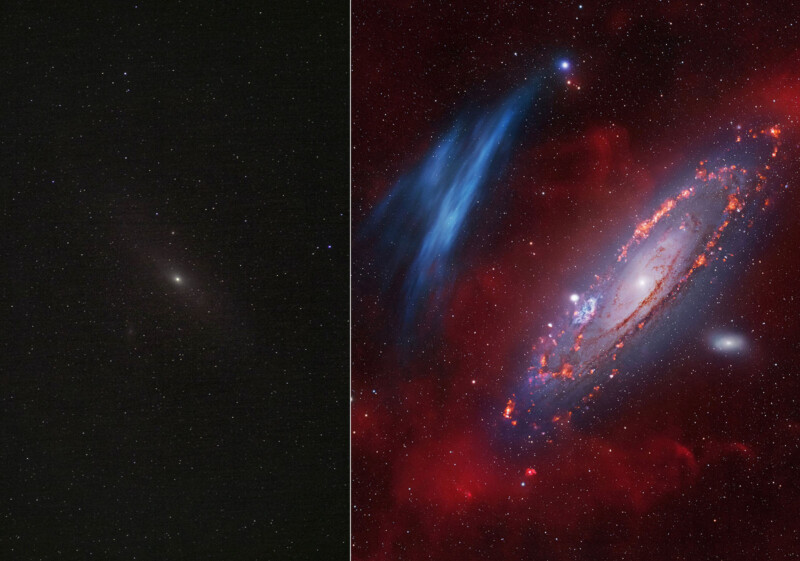
“Photography for me is a means to do astronomy. The two fields are inextricably linked due to our biology,” Falls says, adding, “Human eyes suck at night.”
From those humble beginnings and through a passion for astronomy and the arduous work that it involves, Falls made another considerable discovery just a few months ago.
“Due to the extra time and work it takes to study the objects, it means it takes a lot longer to share the images, so currently only two of these objects have been posted publicly. The first is my first official true discovery and the second is a repeat of my latest image, another optical component I discovered of a known supernova remnant. For discoveries of totally unknown things, it takes a lot of time to get them reviewed and cataloged officially,” Falls says.
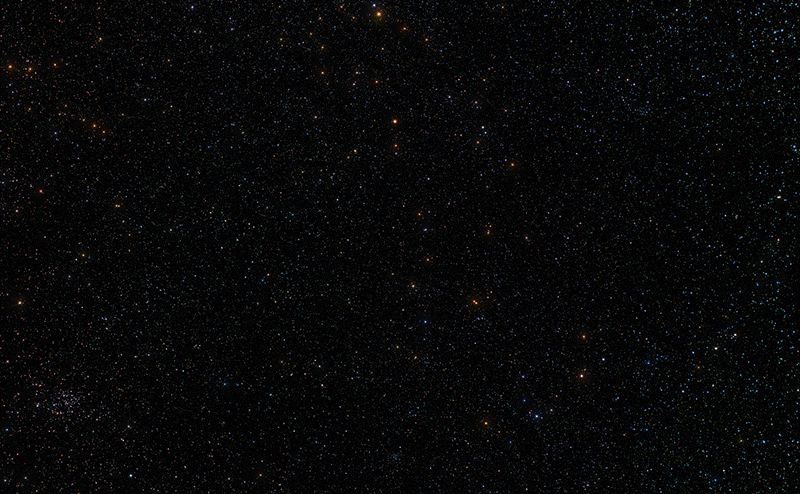
The “first official discovery” he references is Fal Object 1: The Kyber Crystal Nebula. For the uninitiated, lightsabers, the famous weapon of choice of Jedi, Sith, and occasionally other “force-sensitive” individuals in the Star Wars universe, are powered by what’s called a “kyber crystal.” It’s a fitting name for Falls’ discovery given that this article is being published during the same week as “Star Wars Day.”
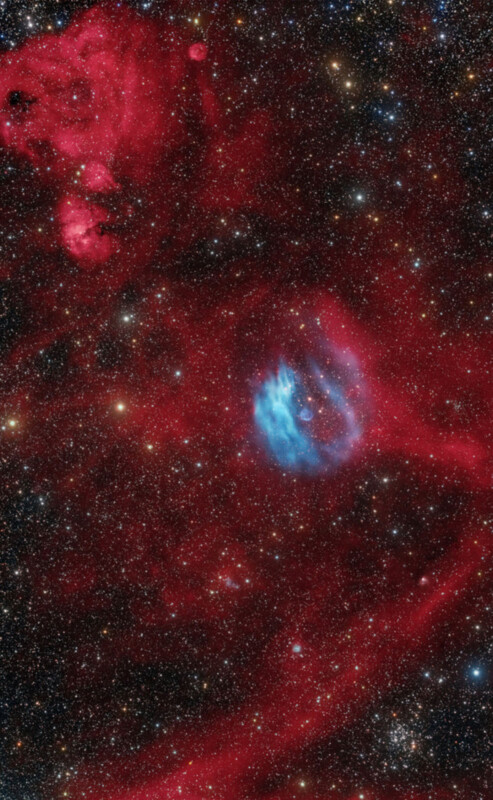
Falls made that discovery using a telescope set up at the remote telescope-hosting facility, the Sierra Remote Observatories (SRO). At the SRO, astronomers can securely leave their equipment and remotely control their gear from the comfort of their homes.
Falls’ photo of the Kyber Crystal Nebula he discovered and named, is his current favorite. It’s an especially meaningful photo for Falls because “of the amount of work and suffering it took to make happen.”
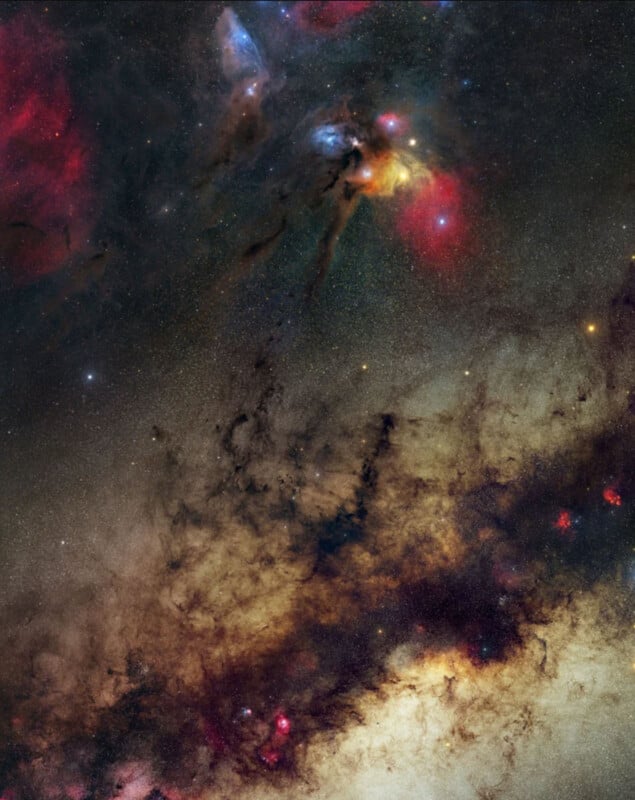
Alongside observations using the SRO, Falls tells PetaPixel he “Observes from all over! A lot from California at SRO and the Joshua Tree desert. A lot from Arizona and Utah, some from Texas, and a lot from Namibia.”
Ongoing Projects and Astrophotography Goals
These days, Falls “can’t get enough of the Gum Nebula and Puppis constellation area of the sky.” It’s a vast area full of “crazy structures” that Falls rarely sees photographed.
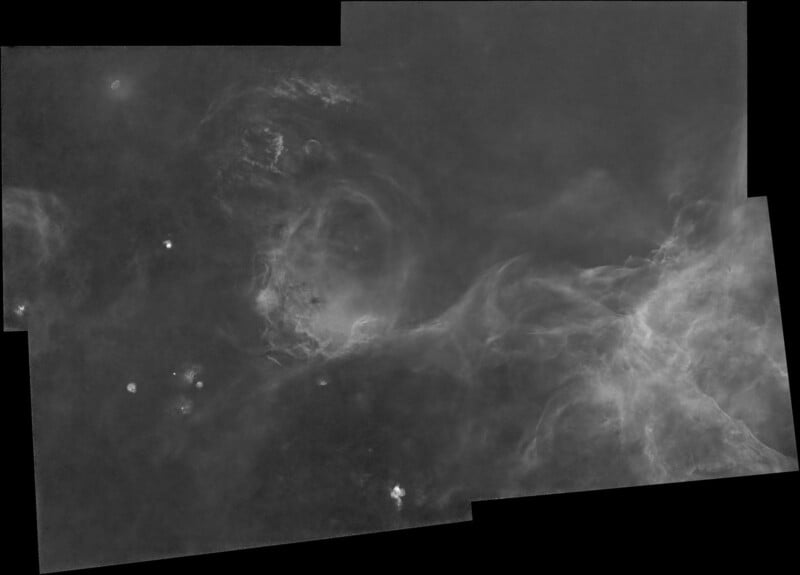
Looking at the longer term, he hopes to continue progress on the southern hemisphere narrowband survey and “search for more undiscovered objects.” When he finishes the exploration survey, he hopes to share a “huge panoramic” image highlighting the locations of all the discoveries made. It will surely be a truly spectacular image.
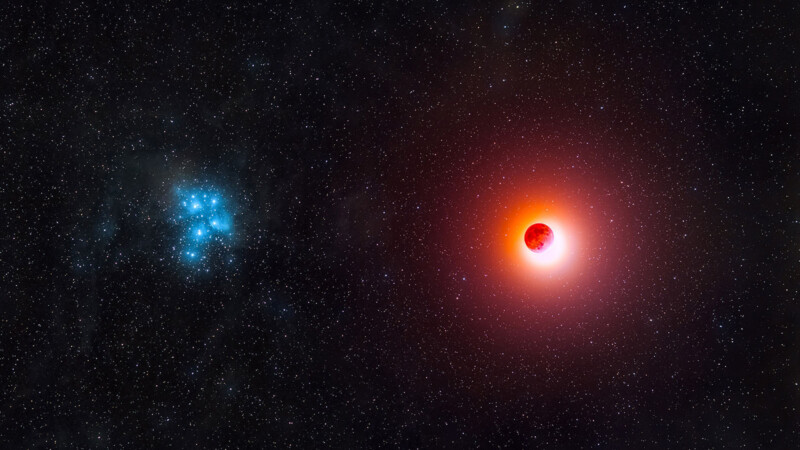
Beyond the immense time investment required to do astronomical surveys, Falls must work around the conditions.
Weather is the greatest challenge. “There’s only so much you can do if the skies refuse to be clear,” Falls says.
Despite the incredible photos he’s captured in the last few months, including exciting discoveries, he tells PetaPixel that the previous couple of months in California, where the SRO is, has “been truly terrible for astronomy.”
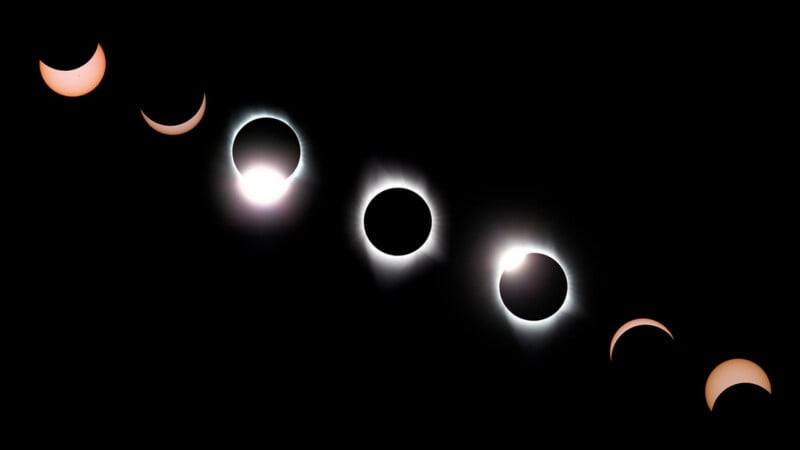
Bray Falls has already made another interesting discovery within the OIII narrowband spectrum. Although, he’s not sure when he’ll be able to share the detailed results and new images.
The story behind this one is very funny, gonna be an undetermined amount of time before I can share but you’ll love it https://t.co/eQqu59yKN8
— Bray Falls (@astrofalls) May 2, 2023
Beyond Weather, Time Management is Challenging in Astronomy
There’s only so much nighttime for observations, and astrophotographers like Falls must work around the lunar cycle and weather. People can plan for the Moon, but the weather is a constant wildcard.
“The way I divvy up my telescope time is still something I’m working on. When the Moon is not in the sky, I typically survey the sky for new things. The Moon messes up images with the OIII filter, so I have to wait for it to go away when looking for ultra-faint things,” Falls explains.
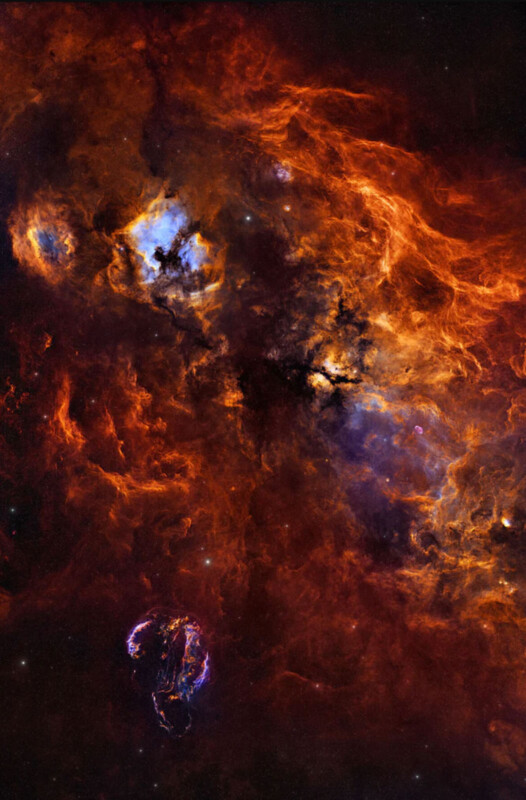
When the Moon is partially out, he often performs follow-up images of prior discoveries and observations.
Although it’s bright, Falls can still work when the Moon is full. He will shoot hydrogen alpha or sulfur II images of objects “since these filters are in the deep red and hold up well under the full moonlight.”
Under constant time pressure, Falls is still developing an ideal workflow that balances his long-term survey work with making new images.
Concerning his images, Falls relies heavily on his friends and colleagues to help him with astrophysics and analyzing his photos.
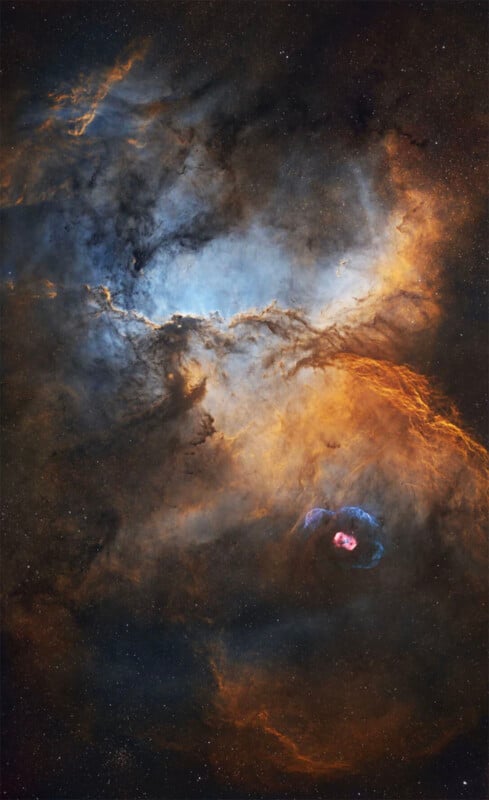
“By trade, I am not educated in astrophysics since my degree is in aerospace engineering. I am good at taking photos and looking for things, but once I find the things, I am pretty dumb at finding an explanation,” Falls admits, although arguably not giving himself enough credit.
“My friends Marcel Dreschler, Xavier Strottner, Robert Fesen, and Dana Patchick have helped on the astrophysics end,” Falls explains.
Four months ago, Falls and Strottner, Fesen, Yann Sainty, Sean Walker, and Stefan Kimeswenger discovered a new nebula. “What you’re looking at is an absolutely massive, low surface brightness arc of oxygen gas. This was completely unknown until a couple months ago when Yann, Marcel, and Xavier noticed some weird things going on in their data. I used my telescope to do some follow up observations to verify the existence of this crazy structure,” says Falls.
Astrophotography is a Tight-Knit Community
Beyond the people Falls mentions that help with astrophysics, he takes a lot of creative inspiration from other friends and colleagues in the field.
While he warns PetaPixel that a comprehensive list would be too long and that he has undoubtedly forgotten some people, he’s inspired by “Rogelio Bernal Andreo, Nicolas Lefaudeux, Miloslav Druckmuller, Wolfgang Promper, and Wei Hao Wang.”
“There are a lot of really great astrophotographers out there,” Falls tells PetaPixel. He recommends exploring Astrobin, the go-to place for astrophotographers to share their work. However, Falls specifically sent along a couple of photos on Astrobin for PetaPixel readers to check out: This one by Marcel Drechsler and this photo by Wolfgang Promper. He also recommends that people visit internationally-acclaimed astrophotographer Rogelio Bernal Andreo’s website.
Bray Falls’ Astrophotography Equipment
While a detailed breakdown of Bray’s equipment is available on his website, (https://astrofalls.com/pages/about) he tells PetaPixel that he used his Takahashi FSQ106 EDXIII with a 0.73x focal reducer and QHY600 camera to capture the awesome nebula images that first caught PetaPixel’s attention.
“The focal length is 389mm, and the f-ratio is f/3.6. This is very fast for a telescope, which really helps with this faint stuff. My telescope is also located at SRO, which helps a lot with access to dark and clear skies on a consistent basis. The sensor for the camera uses a 61-megapixel full-frame sensor. The system is well suited to surveying the sky for faint things,” Falls explains.
Tips for Beginners
For photographers interested in astrophotography, “The best way to start is to use what you already have. If you have a DSLR camera, perfect. A pair of binoculars can also provide a great visual experience,” says Falls.
“Astrophotography is expensive, and you will waste money if you don’t know what kind of photos you want to take. I recommend getting out under the stars, looking at other people’s photos, find what you are to and inspired by. Then work your way backward from that goal,” Falls recommends.
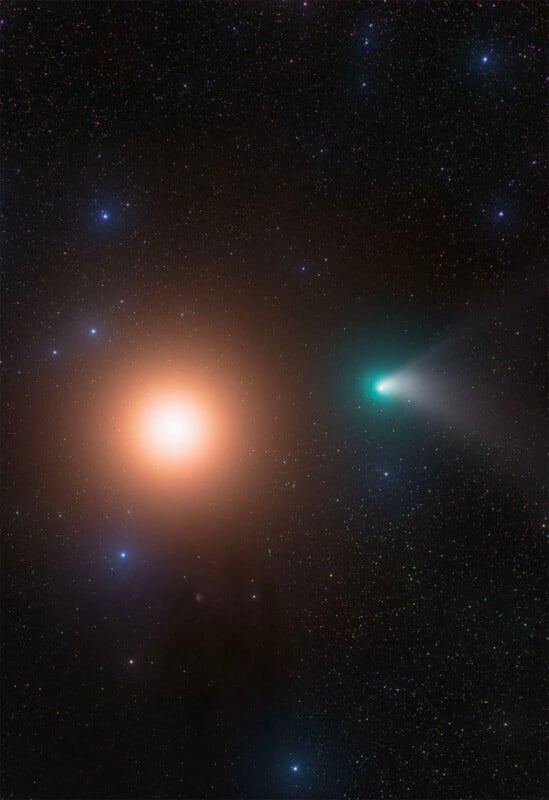
However, for those who desire a “one-size-fits-all” answer, “You can’t go wrong with a DSLR, a Rokinon 135mm lens, and a star tracker,” Falls says.
On Bray’s blog, he has a post outlining different “budget” setups that photographers can use to perform deep sky astrophotography.
Even with the appropriate equipment, capturing and processing astrophotography images can be daunting. Falls offers consultation services and has produced a pair of image-processing guides.
Falls also has upcoming workshopst that he’s hosting with his best friend, Derek Culver.
Falls tells PetaPixel that he’s always happy to do one-on-one work with interested photographers, whether someone is interested in image processing or capture. “Just reach out via my website,” Bray says.
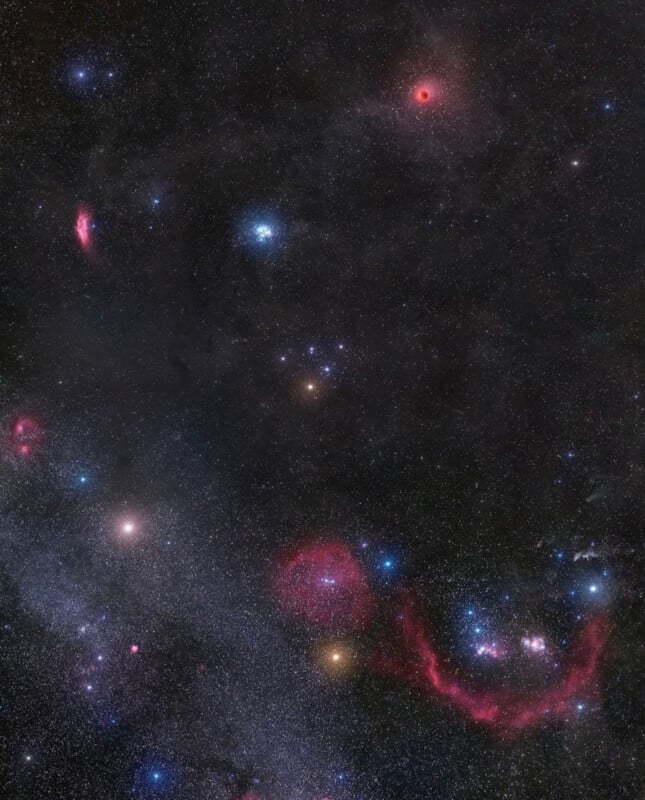
Where to Follow Bray Falls
Bray Falls’ astrophotography is available on his website, Instagram, and Astrobin. He also regularly posts videos on his YouTube channel showcasing his latest observations and sharing tips and behind-the-scenes information.
Image credits: Bray Falls